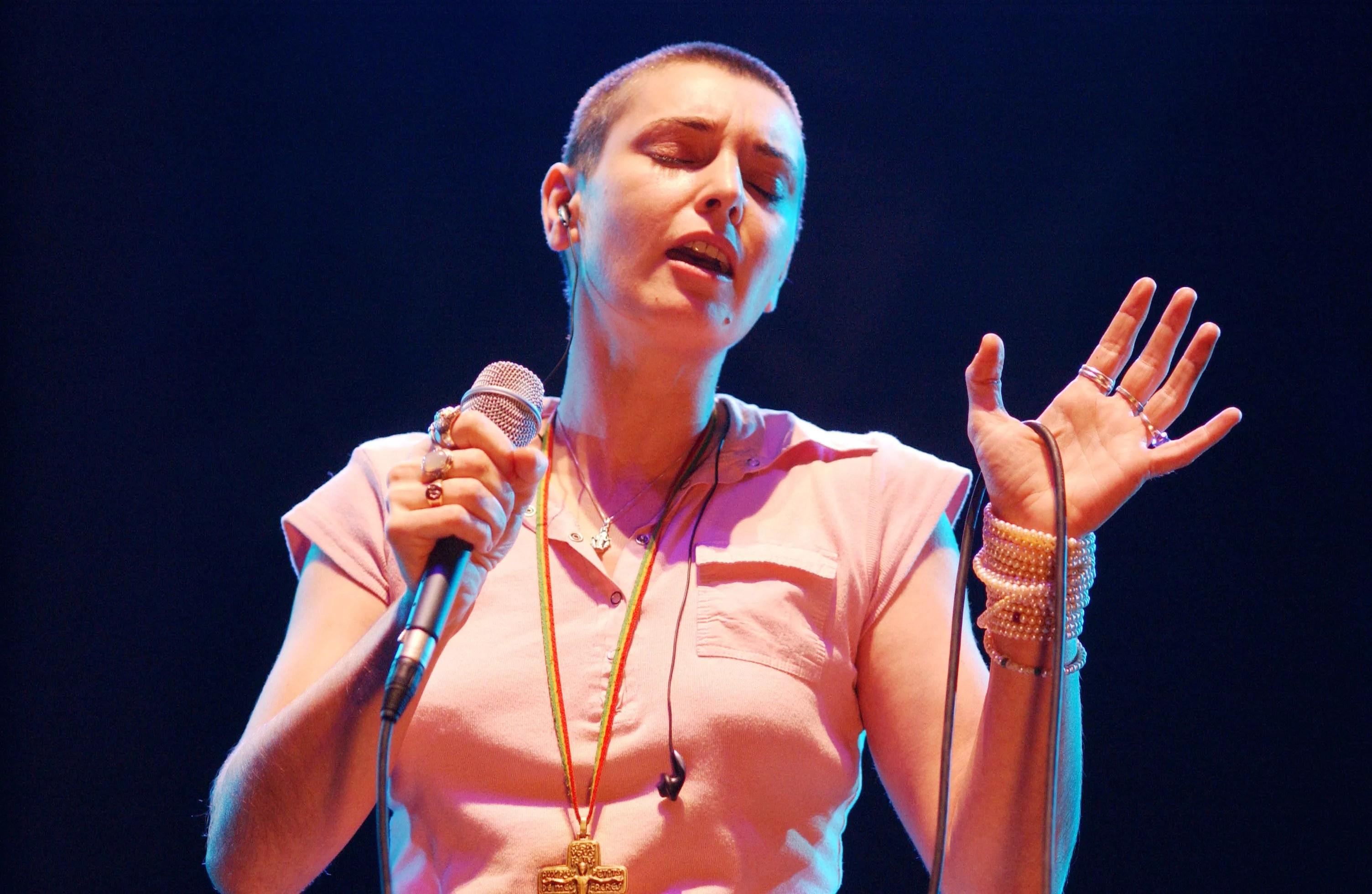
Getty Archives

Audio By Carbonatix
The tears should’ve been a tell.
Much of the wider world first became acquainted with Sinead O’Connor through her 1990 cover of Prince’s “Nothing Compares 2 U,” and its accompanying music video. The clip derives considerable power from repeated use of an unflinching close-up of O’Connor, who sheds real tears – as she sings “But I’m willing to give it another try” – around the 3:50 mark.
It’s a visceral moment, and one crystallizing the profound depth of feeling the Irish singer-songwriter brought to her art – a real, human connection cutting through the sound and fury that accompanies global pop superstardom.
O’Connor, per multiple reports, died Wednesday at the too-young age of 56. No cause was immediately disclosed. She is survived by three children and a grandson.
We’re thankful for you. Are you thankful for us?
We feel thankful for our staff and for the privilege of fulfilling our mission to be an unparalleled source of information and insight in Dallas. We’re aiming to raise $30,000 by December 31, so we can continue covering what matters most to this community.
Help us continue giving back to Dallas.
“It is with great sadness that we announce the passing of our beloved Sinead,” O’Connor’s family said in a statement to the BBC. “Her family and friends are devastated and have requested privacy at this very difficult time.”
O’Connor was uncompromising from the moment she became a known quantity, as evidenced by her searing 1987 solo debut The Lion and the Cobra, a landmark rock album of the late 1980s. She unflinchingly sang of sexuality, violence, religion, and social justice – hot-button topics in any era, but especially so in a cultural moment that was decidedly conservative.
With the arrival of her sophomore album, 1990’s I Do Not Want What I Haven’t Got, O’Connor’s career entered the stratosphere on the strength of “Nothing Compares 2 U,” which went to No.1 on charts around the world and earned her multiple Grammy nominations, as well as a win for Best Alternative Music Performance (which O’Connor famously refused to accept).
Amid the glare of fame, O’Connor’s complicated life came under scrutiny. Childhood trauma – among other incidents, O’Connor was subjected to severe emotional and physical abuse by her mother – led to profound mental health struggles for her as she entered adulthood.
Forging a career in music and finding success can be destabilizing as it is, but O’Connor, who was quite vocal about her struggles, always seemed to pour her pain into the music, losing herself in the act of expression.
That catharsis – for the audience, as well as the artist – had its limits, as O’Connor discovered in 1992. During a live broadcast of Saturday Night Live, she concluded a riveting a cappella performance of Bob Marley’s “War” by tearing apart a photo of Pope John Paul II and saying, “Fight the real enemy.”
The backlash was immediate – and intense. O’Connor’s own pain, the hurt she felt about the Catholic Church and its hypocrisies around sexual abuse, got lost in the indignant fallout that followed over the weeks and months afterward. It was only in the wake of multiple investigations and criminal charges that O’Connor’s prescience became clear – it’s brutally unfair that she was dismissed as little more than a crank in the 1990s.
Still, to her immense credit, the fearless O’Connor never wavered. The courage of her convictions effectively cost her a career, with a fall from the spotlight as swift as her ascent. If O’Connor was ever bothered by the shift in fortunes, she never let on.
Her staunch commitment to forging her own path brought additional woes in the coming years: retiring and un-retiring; changing her name multiple times; embarking on spiritual journeys, including a conversion to Islam; sparking controversies on Twitter.
She also weathered the untimely death of her son Shane, who took his own life at age 17, in 2022. At the time of Shane’s passing, she was working on what would’ve been her first studio release in almost a decade, tentatively titled No Veteran Dies Alone. O’Connor instead shelved the project, making her 10th studio album, I’m Not Bossy, I’m the Boss, released in 2014, her final output.
While most remembrances of O’Connor will likely focus on the controversies to the exclusion of the rest of her achievements, it’s worth remembering why there was such an outcry to begin with. From the beginning, O’Connor was an unvarnished figure. Amid so much vapidity in 1980s pop music, hers was a brand of art that didn’t shy away from shortcomings or from having a distinct point of view.
Her immense pain, tumultuous upbringing and unique perspective separated her from most of her contemporaries. (Not for nothing was it Kris Kristofferson who offered O’Connor solace when she was viciously booed during a Bob Dylan tribute concert weeks after her infamous Saturday Night Live appearance – Kristofferson knew a fellow iconoclast when he saw one.)
That her life was so overfull of tragedy and loss is heartbreaking, especially given the young age at which she died. If O’Connor ever found true happiness in the act of making music – there are certainly fleeting glimpses of such in the terrific documentary Nothing Compares, which was released last year – those moments were infrequent.
Far more often, it felt as though O’Connor was forging ahead through the agony. Her indelible songs have endured, escaping the shadows of controversy and laying bare the brilliance of her art. Such craftsmanship came at a profound cost – call it a tear-stained triumph – but beauty for which we should be eternally grateful.